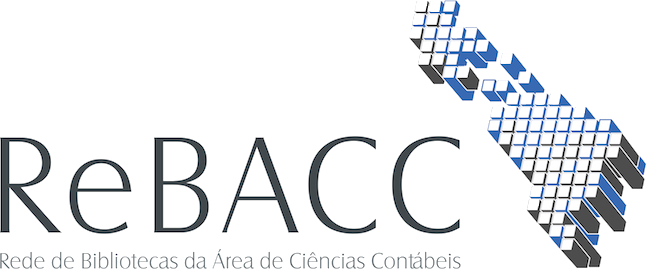Use este identificador para citar ou linkar para este item:
http://rebacc.crcrj.org.br/handle/123456789/1444| metadata.atena.dc.title: | The release of accounting and financial information in the virtual world A DIVULGAÇÃO DE INFORMAÇÕES CONTÁBEIS E FINANCEIRAS NO MUNDO VIRTUAL |
| metadata.atena.dc.creator: | Fernando Pereira Tostes Miklos A. Vasarhelyi |
| metadata.atena.dc.subject: | XBRL; IASC; US-GAAP; Taxonomy;Accounting Harmonization; Plano de Contas; DOAR; DFC; US-GAAP; Taxonomia; Harmonização Contábil |
| metadata.atena.dc.date.issued: | 2014-11-12 |
| metadata.atena.dc.publisher: | REVISTA DE CONTABILIDADE DO MESTRADO EM CIÊNCIAS CONTÁBEIS DA UERJ |
| metadata.atena.dc.description: | The original business measurement model was developed for the industrial organization of the 19-20th century under a regime of limited to nonexistent information technology. While business organizations have changed substantively towards an information organization whose main assets are not physical in nature, the measurement model has not evolved sufficiently and so it is poorly equipped to deal with the emerging information organization. Consequently, new and improved accounting and reporting requirements and mechanisms are needed to meet our commitment to the user/public marketplace of the 21st century. The opportunity comes with XBRL, a new tool designed to overcome the inefficiencies of disparate, non-integrated and outsourced accounting and financial systems by using the power of XML – the Extensible Markup Language. XBRL is an agreement on how to represent accounting and after-the-fact operation information – anything that is found in a chart of accounts, journal entries or historical transactions, financial and non-financial – and transter it to and from a data hub or communicate it in a data stream. The new technology has been recommended by the IASB, the AICPA and the SEC. Finally, the article examines some unintentional effects of the XBRL project. Keywords: XBRL; IASC; US-GAAP; Taxonomy;Accounting Harmonization Os quadros demonstrativos contábeis não conseguem mais informar, satisfatoriamente, a exposição de risco financeiro de uma empresa. Surgiram novos instrumentos operados fora do balanço, como derivativos e contratos com obrigações contingentes. As Notas Explicativas e o Relatório de Administração não tem sido suficientes para suprir essa deficiência de informação. O foco atual está em facilitar a obtenção de dados diretamente pelos usuários, mas até a pouco não existia uma linguagem adequada, universal para transmissão de informações contábeis. Esta situação está sendo modificada com a introdução de XBRL, uma forma de “etiquetagem” de informação, baseada na linguagem XML. Esta nova tecnologia oferece vantagens importantes e foi recomendada para uso pelo International Accounting Standard Board - IASB e pelo Security Exchange Comission - SEC. Este artigo discute os efeitos não intencionais do projeto XBRL e examina, também, o potencial da tecnologia, para melhorar a evidenciação de dados financeiros através do Projeto Galileo. Este projeto, que visualiza um novo enfoque tecnológico na avaliação do desempenho de uma empresa, foi apoiado pelo Instituto Americano de Contadores (AICPA) e tenta motivar as autoridades contábeis a pensarem em novos métodos, para melhorar mensuração e intercâmbio de dados financeiros. Palavras-chave: XBRL; XML; IASC; Plano de Contas; DOAR; DFC; US-GAAP; Taxonomia; Harmonização Contábil ABSTRACT The original business measurement model was developed for the industrial organization of the 19-20th century under a regime of limited to nonexistent information technology. While business organizations have changed substantively towards an information organization whose main assets are not physical in nature, the measurement model has not evolved sufficiently and so it is poorly equipped to deal with the emerging information organization. Consequently, new and improved accounting and reporting requirements and mechanisms are needed to meet our commitment to the user/public marketplace of the 21st century. The opportunity comes with XBRL, a new tool designed to overcome the inefficiencies of disparate, non-integrated and outsourced accounting and financial systems by using the power of XML – the Extensible Markup Language. XBRL is an agreement on how to represent accounting and after-the-fact operation information – anything that is found in a chart of accounts, journal entries or historical transactions, financial and non-financial – and transter it to and from a data hub or communicate it in a data stream. The new technology has been recommended by the IASB, the AICPA and the SEC. Finally, the article examines some unintentional effects of the XBRL project. Keywords: XBRL; IASC; US-GAAP; Taxonomy;Accounting Harmonization |
| metadata.atena.dc.identifier.uri: | http://rebacc.crcrj.org.br/handle/123456789/1444 |
| metadata.atena.dc.identifier: | http://www.atena.org.br/revista/ojs-2.2.3-06/index.php/UERJ/article/view/672 |
| Aparece nas coleções: | Artigos - Atena |
Arquivos associados a este item:
Não existem arquivos associados a este item.
Os itens no repositório estão protegidos por copyright, com todos os direitos reservados, salvo quando é indicado o contrário.

